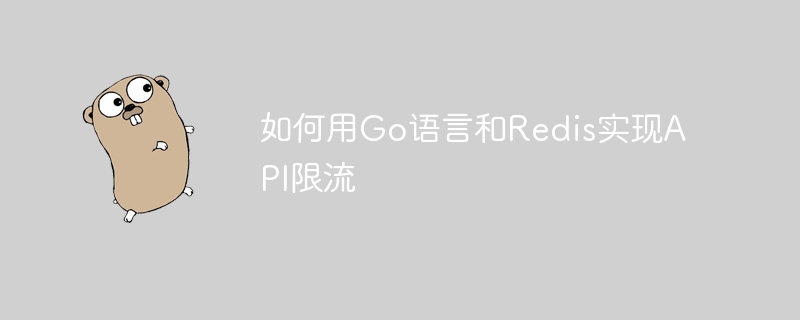

How to implement API current limiting using Go language and Redis
Overview:
With the rapid development of the Internet, the usage of API interfaces is also increasing. Some API interfaces may cause excessive system load or even paralysis due to too many requests. In order to ensure the stability and reliability of the system, we need to limit the current flow of the API interface. This article will introduce how to use Go language and Redis to implement API current limiting function, and provide specific code examples.
package main
import (
"fmt"
"github.com/go-redis/redis"
"time"
)
const (
MaxReqPerSec = 100 // 每秒最大请求数
)
func main() {
client := redis.NewClient(&redis.Options{
Addr: "localhost:6379",
Password: "", // 如果有密码,填入密码
DB: 0, // 默认数据库
})
// 初始化令牌桶
client.Set("bucket", MaxReqPerSec, 0)
// 模拟请求
for i := 0; i < 1000; i++ {
if allowed, err := checkAPIRequest(client); allowed {
// 执行API请求
fmt.Println("API request allowed")
// ....
} else {
fmt.Println("API request denied")
// ....
}
time.Sleep(time.Millisecond * 100)
}
}
func checkAPIRequest(client *redis.Client) (bool, error) {
val, err := client.Decr("bucket").Result()
if err != nil {
return false, err
}
if val < 0 {
client.Incr("bucket")
return false, nil
}
return true, nil
}Code description:
main function, we first establish a connection with Redis, initialize a token bucket, and set the maximum number of requests per second to 100. checkAPIRequest function is used to check whether API requests are allowed. At each request, we take out a token from the token bucket through the client.Decr("bucket") operation. If the number of tokens is less than 0, it means that the request cannot be made and the token needs to be Add the token to the bucket and return false. If the number of tokens is greater than or equal to 0, the request is allowed and true is returned. main.go file, use the command line to enter the directory where the file is located, and execute go run main.go to run the code. The program will simulate 100 requests, with an interval of 100 milliseconds between each request. According to the maximum number of requests set, the first 100 requests should be allowed, and subsequent requests should be rejected. Summary:
This article introduces how to use the Go language and Redis to implement the API current limiting function and control the requested traffic through the token bucket algorithm. By using this method, you can effectively protect the system from being overwhelmed by a large number of requests and improve the stability and availability of the system.
The above is the detailed content of How to implement API current limiting using Go language and Redis. For more information, please follow other related articles on the PHP Chinese website!
 Usage of Type keyword in Go
Usage of Type keyword in Go
 How to implement linked list in go
How to implement linked list in go
 What are the Go language programming software?
What are the Go language programming software?
 How to learn go language from 0 basics
How to learn go language from 0 basics
 Commonly used database software
Commonly used database software
 What are the in-memory databases?
What are the in-memory databases?
 What are the methods to implement operator overloading in Go language?
What are the methods to implement operator overloading in Go language?
 What are the operators in Go language?
What are the operators in Go language?




